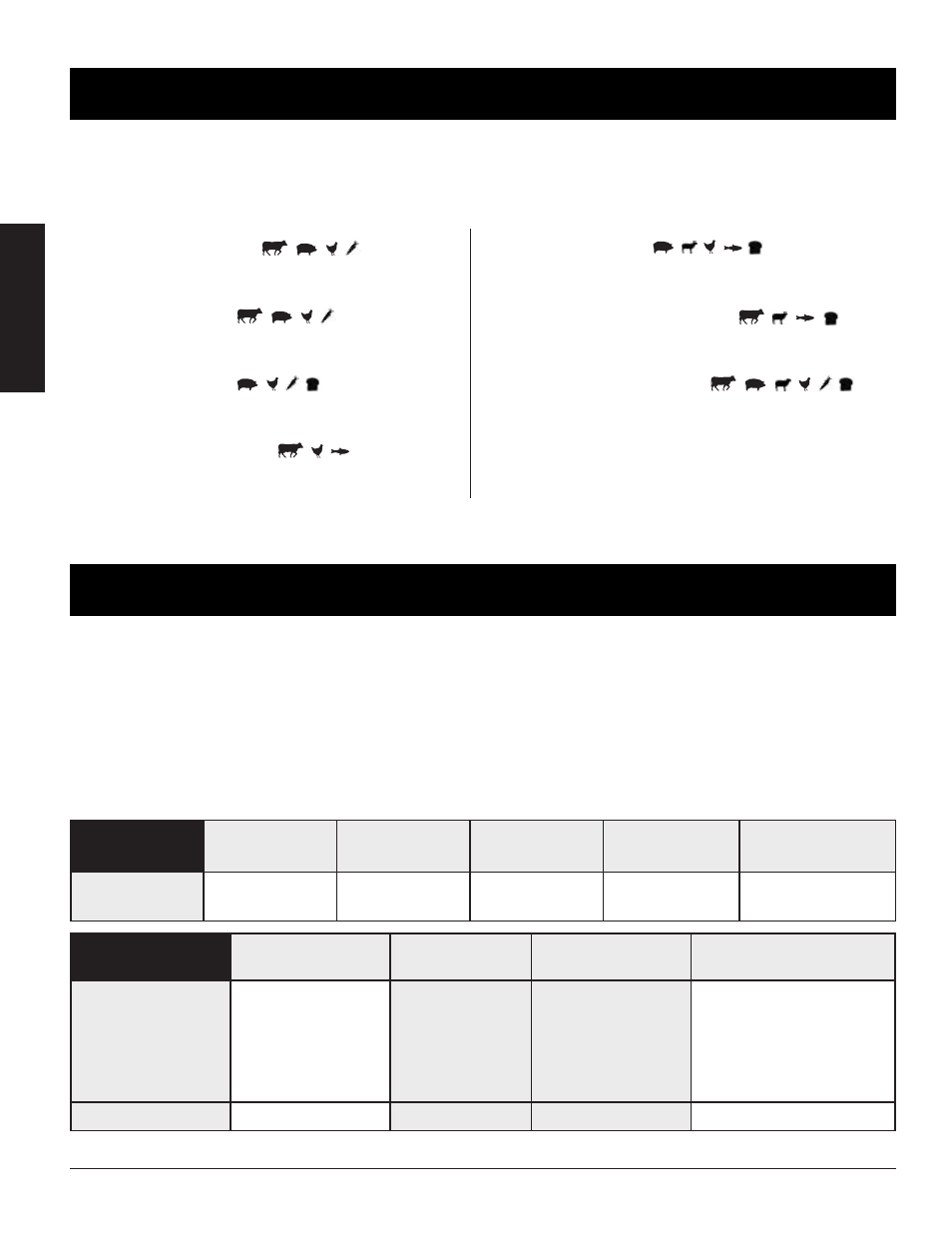Using wood pellet fuel, Cooking guidelines, English – Louisiana Grills 44 Inch Built-In Wood Pellet Grill User Manual Manuel d'utilisation
Page 18: Hickory blend, Cherry blend, Pecan blend, Whiskey barrel blend, Apple blend, Competition blend, Mesquite blend

18
ENGLISH
USING WOOD PELLET FUEL
Clean-burning barbecue wood pellets generate about 8200 BTU’s per pound with very little ash, a low moisture content (5-7%),
and are carbon neutral. Barbecue wood pellets are produced by pure raw material (sawdust) being pulverized with a hammer-
mill, and the material is pushed through a die with pressure. As the pellet is forced through the die, it is cut, cooled, screened,
vacuumed, and then bagged for consumer use. Check with your local dealer for flavors available in your area.
HICKORY BLEND
Rich, smoky bacon-like flavor. Considered the
“Kings of the Woods”
CHERRY BLEND
Slightly sweet, but also tart. Gives a rosy tint
to light meals.
PECAN BLEND
Smoky, bacon-like flavor. Similar to Hickory,
but less strong.
WHISKEY BARREL BLEND
Strong, sweet smoke with aromatic tang.
Perfect for red meats.
APPLE BLEND
Smoky, mild sweetness flavor. Highly
recommended for baking.
COMPETITION BLEND
Perfect blend of sweet, savory, and tart. Used
by many professional grillers.
MESQUITE BLEND
Strong, tangy, spicy flavor. Think Tex-Mex
cuisine.
NOTE: Always store wood pellets in a dry area. Avoid any contact or exposure to moisture will result in lower heat output or
cause the pellets to swell and break apart. Use a moisture proof, resealable tub or bucket for proper storage.
COOKING GUIDELINES
Smoking and grilling styles of cooking can give you different results based on time and temperature. For best results, keep a
record of what you cooked, at what temperature, how long you cooked for, and the results. Adjust to your taste for the next time.
Practice makes perfect.
The culinary art of hot smoking refers to longer cooking times, but results in more natural wood flavor (and a sought-after
smoke
ring
) on your meats. Higher cooking temperatures result in a shorter cooking time, locking in less smoke flavor.
TIP: For best results, allow time for meats to rest after cooking. This allows the natural juices to migrate back into the
meat fiber, giving a much juicer, flavorful cut. Resting times can be as little as 3 minutes and up to 60 minutes, depending
on the size of the protein.
STYLE OF
COOKING
HOT SMOKING
(Very Low)
ROAST
(Low)
BAKING
(Medium)
GRILL/BAKE
(Medium/High)
SEAR
(High)
Temp Range
93-135 °C /
199-275 °F
135-162 °C /
275-323 °F
162-190 °C /
323-374 °F
190-232 °C /
374-449 °F
232-315 °C /
449-600 °F
POULTRY
SIZE
Rare - 54°C / 130°F Medium - 60°C /
140°F
Well Done - 77°C / 170°F
Turkey
(whole)
4.5-5.0 kg / 10-11 lbs.
5.3-6.4 kg / 12-14 lbs.
6.8-7.7 kg / 15-17 lbs.
8.2-10.0 kg / 18-22 lbs.
10.4-11.3 kg / 23-25
lbs.
Grill 90 - 120 minutes
Grill 110 - 140 minutes
Grill 130 - 160 minutes
Grill 140 - 170 minutes
Grill 150 - 180 minutes
Chicken
(whole)
1.36-2.26 kg / 3-5 lbs.
Grill 1 - 1.5 hours